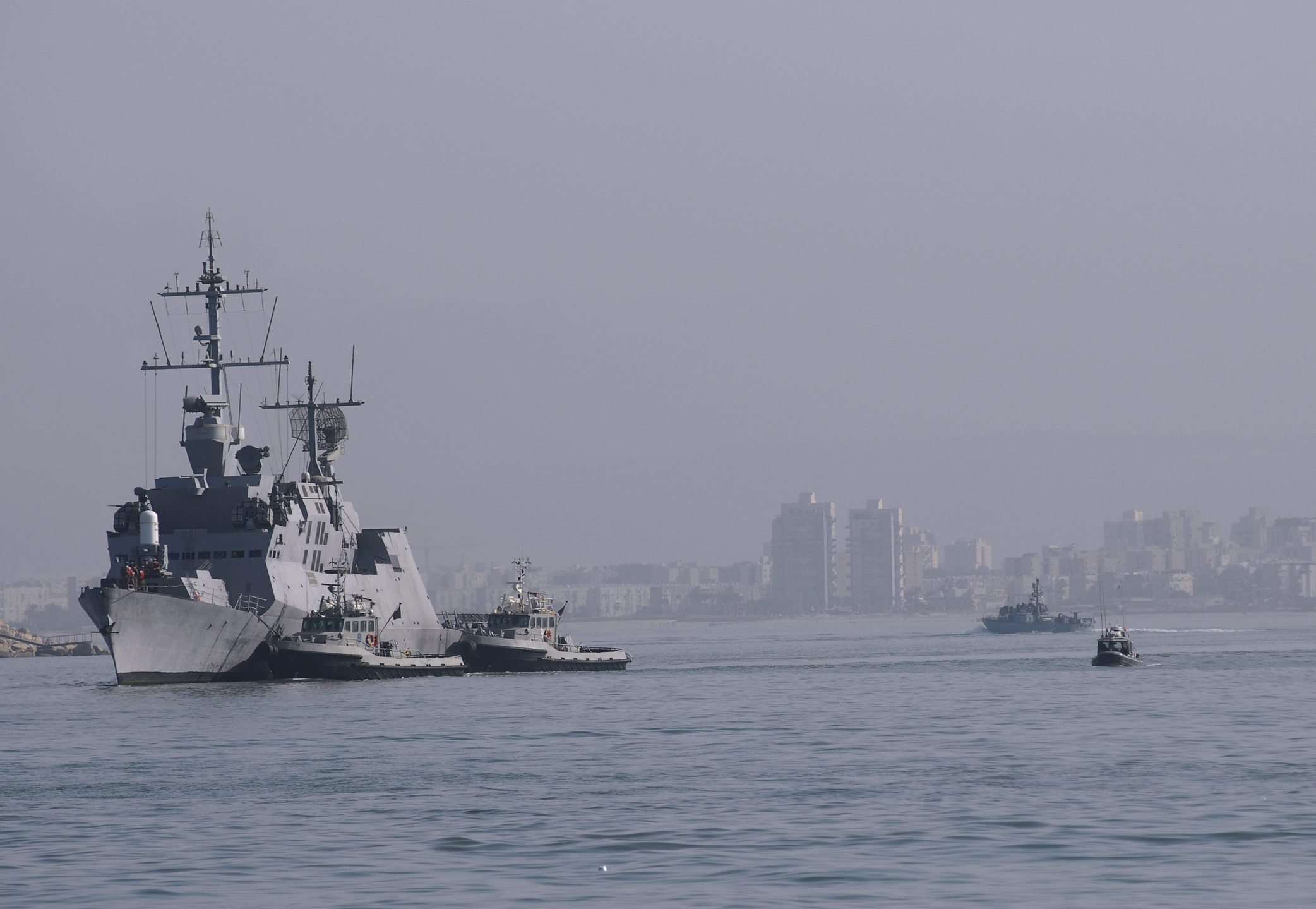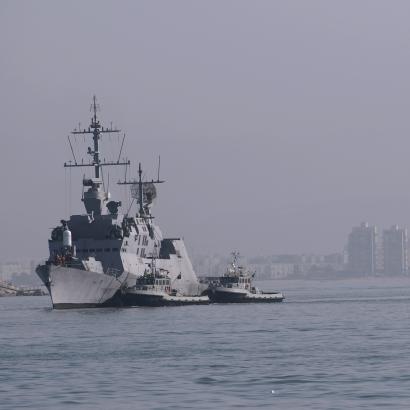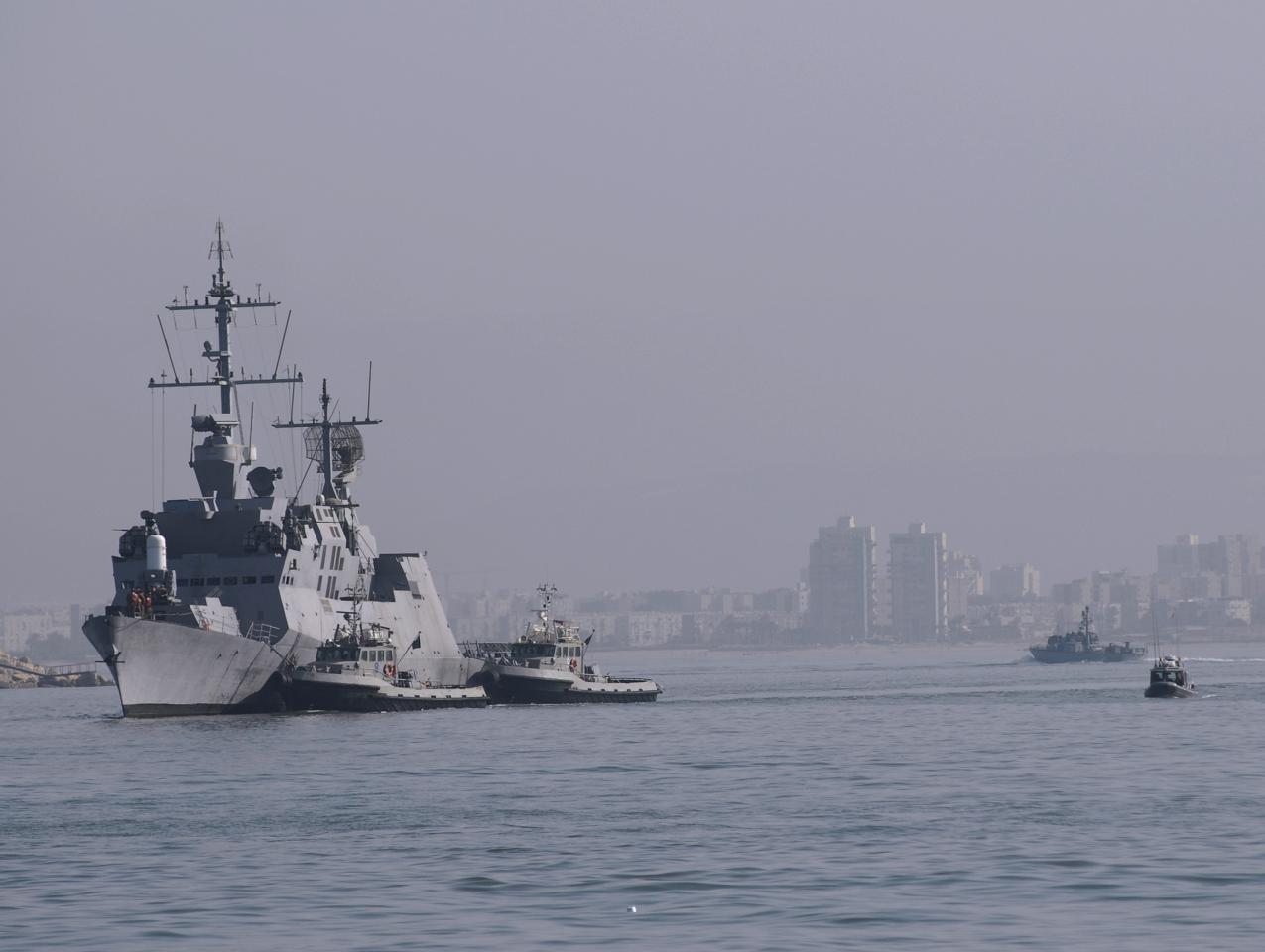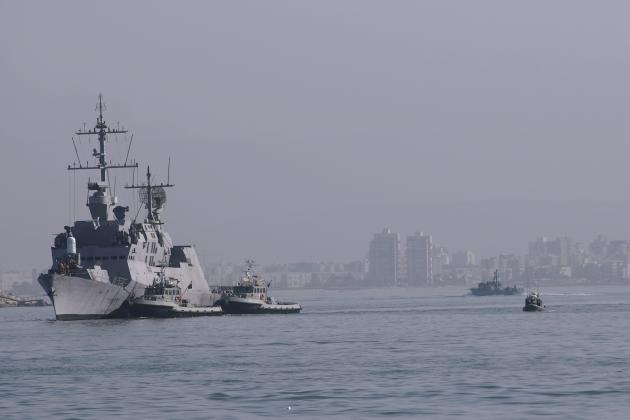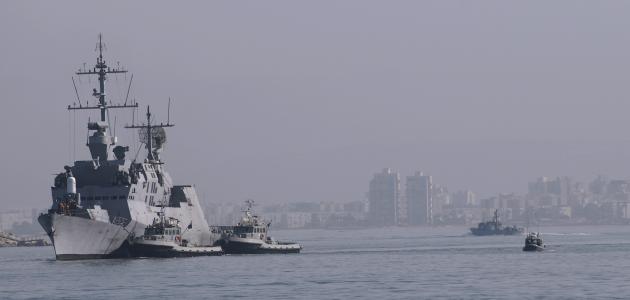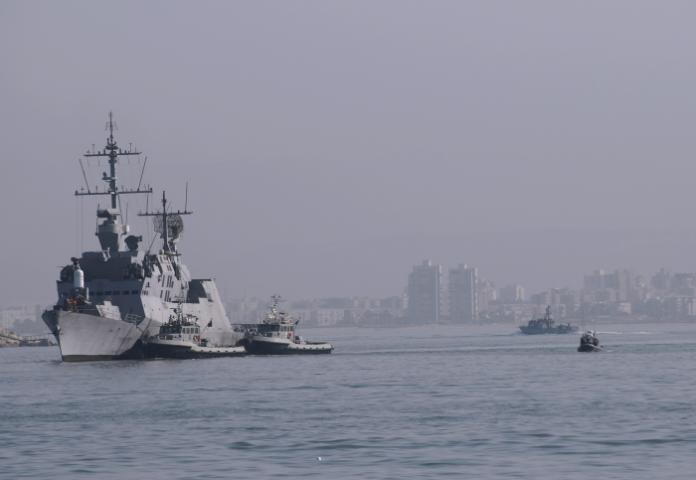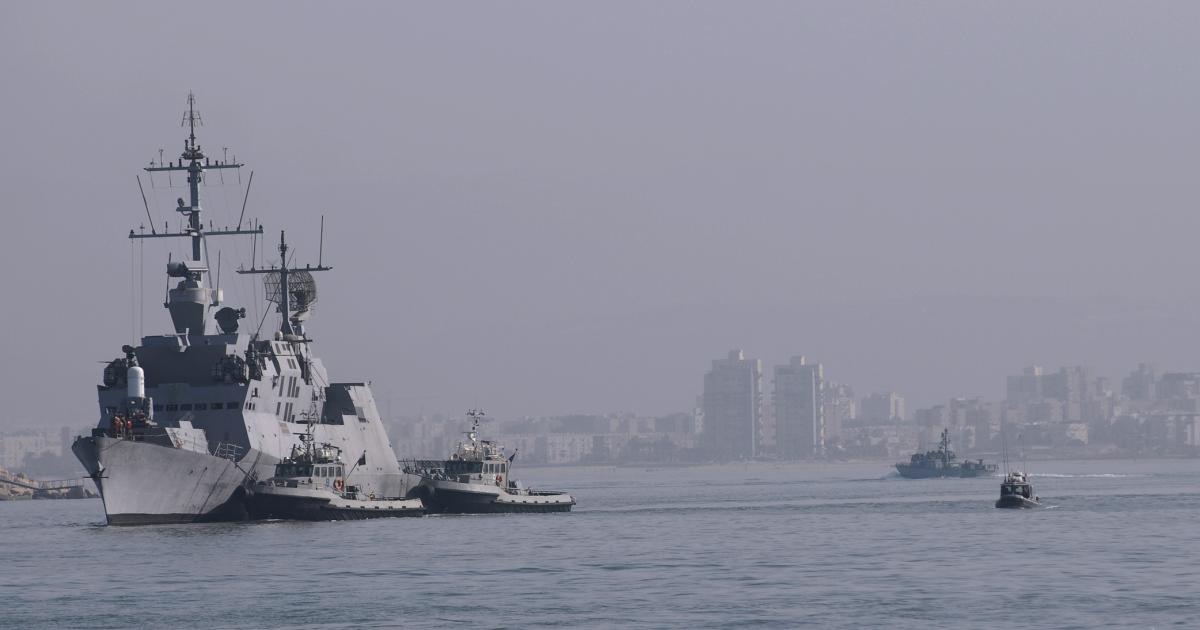- Middle East
The maritime dimension of the ongoing Middle East conflict has largely remained secondary, with the majority of military engagements occurring on land and in the air. However, it was a war-related maritime security challenge—the Houthi attacks on global shipping in the Bab-el-Mandeb strait—that significantly broadened the conflict’s strategic impact, extending its consequences beyond the region. Moreover, the sea’s strategic importance, particularly as a source of energy in the Eastern Mediterranean, could increase as this round of violence continues and as future conflicts erupt.
The war began on October 7, 2023, when over a hundred Hamas squads breached the border fence separating Gaza from Israel at 06:29 AM. Concurrently, a small yet coordinated seaborne Hamas assault targeted the coastal area near Zikim, a kibbutz with nearby military bases, just two kilometers north of Gaza. Seven boats carrying 38 fighters attempted to land on Israeli shores. Israeli naval forces destroyed two of the vessels and partially damaged a third, but the remaining boats reached land. The militants murdered 17 civilians and engaged in skirmishes with Israeli forces until October 12. Yet, this was a limited operation. Less than 0.5% of Hamas’ total assault force arrived by sea. The casualties, while tragic, represented only about 1% of Israel’s losses that day.
The ensuing war largely revolved around ground and air combat, with Israel’s adversaries generally refraining from sea-borne attacks. Israel, however, did use the maritime domain to launch attacks on Hamas in Gaza and Hezbollah in Lebanon, though these were generally limited. The Israeli navy maintained a blockade of Gaza and targeted coastal positions with naval gunfire. Israel’s elite naval unit also conducted seaborne operations, including the capture of a Hezbollah operative involved in maritime smuggling in Batroun, Lebanon, 150 kilometers north of the Israeli-Lebanese border. In an effort to remain relevant, the elite unit participated in a broader set of operations, but acting as a regular ground force, not a particular maritime aspect.
Red Sea based U.S. and Israeli naval assets also intercepted missiles and drones launched from Yemen. By December 2023, for example, a single vessel, the USS Carney alone had intercepted 22 projectiles and drones, most likely aimed at Israel. The Israeli Navy deployed its C-Dome system, the naval variant of the Iron Dome, in the Red Sea close to Israel’s shores to neutralize some aerial threats. Despite these efforts, maritime intercepts were secondary to the large-scale ground-based and aerial defense operations led by Israel, the U.S., and their allies. This imbalance is partly due to geography: Iran’s access to Israel is primarily land-based, not maritime.
The maritime component, however, is likely to grow in significance for regional actors. Gaza’s 60 kilometers of Mediterranean coastline and Israel’s 200 kilometers of Mediterranean shore make it possible for external actors to engage Gaza, and indeed Israel, via the sea. Hints of the possibility have unfolded already. In the spring of 2024, for example, the U.S. delivered aid to Gaza via a pier on its Mediterranean coastline. More recently, in May 2025, a ship carrying activists attempting to breach Gaza’s maritime blockade was attacked by drones near Malta.
Israel’s offshore natural gas facilities are another vulnerable target. The Tamar gas field, located some 25 kilometers off Israel’s southern coast, was ordered to cease operations at the outset of the war. It resumed operations over a month later, but the switch to other energy sources cost Israel around 800 million NIS (approximately $225 million USD).
Seen from a global perspective, however, the maritime aspects of the war carry great significance for at least two reasons. First, the Middle East is a critical hub for global maritime shipping lanes, notably through the Suez Canal and the Red Sea. Second, the sea has long been a primary theater for great powers projecting influence in the region, dating back to the early days of U.S. naval deployments in the Mediterranean in the 19th century fighting pirates. In this conflict, the Red Sea has become the focal point of global maritime security operations,
Since November 2023, the Houthis in Yemen have launched over 100 missile and drone attacks against over 60 commercial vessels passing through Bab-el-Mandeb, a narrow strait linking the Red Sea to the Gulf of Aden and, by extension, the Suez Canal. In November 2023, they also hijacked the Galaxy Leader, a Japanese-operated vessel which is partly owned by an Israeli businessman. The crew was held in Yemen and released only in January 2025.
These attacks have forced over 2,000 ships to reroute around the Cape of Good Hope, with container traffic through the Red Sea decreasing by 90% between December 2023 and February 2024. The Suez Canal’s cargo traffic dropped by 50%, leading to a significant decline in revenues, from $10.25 billion in 2023 to $3.9 billion in 2024. Major shipping companies, including Maersk and MSC, suspended operations through the Red Sea, worsening supply chain disruptions.
In response, the U.S. launched Operation Prosperity Guardian in December 2023. Led by the U.S. navy's Combined Task Force 153, the operation was designed to ensure the safe passage of commercial vessels through the Red Sea. A parallel European operation, code-named Aspides, focused on defensive measures. By March 2025, the U.S. initiated a more aggressive campaign—Operation Rough Rider—aimed at reducing Houthi missile and drone threats. As of April 2025, the U.S. had launched over 1,000 airstrikes, reducing Houthi attacks: 50% for drones and 69% for ballistic missiles.
Despite these efforts, deterrence remains elusive. The May 6, 2025, ceasefire brokered by Oman has temporarily halted U.S.-Houthi hostilities, but the Houthis continued their attacks on Israel, signaling that their campaign is far from over. The attacks also have second-order effects on U.S.-Egypt relations. In April 2025, President Donald Trump proposed that U.S. military and commercial ships should be allowed to pass through the Suez Canal without paying tolls. This proposal, though politically charged, ran counter to international treaties governing these critical chokepoints. Egyptian President Abdel Fattah el-Sisi rejected the proposal, reaffirming Egypt’s commitment to the 1888 Constantinople Convention, which guarantees the free passage of ships but does not permit exemptions from tolls.
Beyond the global strategic dimensions of the maritime conflict, Israel’s reliance on natural gas reserves in the Mediterranean underscores the growing importance of securing sea lanes. With the increasing focus on maritime strategies, the sea remains a critical space for both military and economic considerations in the region’s geopolitical landscape.
Four key implications emerge from this maritime state of affairs.
First, even though in the immediate regional context maritime concerns are secondary, the global importance of sea traffic makes it a crucial arena for great power engagement with the conflict. Great powers have more of an incentive to intervene there, but also to engage with efforts to end land-based regional conflicts, due to their global maritime effects. This is an old lesson in the region. Following the 1967 Six Day War, the Suez Canal was closed for some eight years. It re-opened only after a massive US diplomatic effort to have Israel and Egypt sign an interim agreement following their 1973 war.
Second, although secondary during the fighting, the maritime domain has become increasingly important for regional actors. Israel will need to extend more resources to the area either by deploying maritime assets there, strengthening relations with regional actors with access to the Red Sea, or by further deepening its mil-mil relations with global actors that operate in these waters.
Third, with Israel and Gaza long shores, and with Israel relying on gas from the sea, this is an arena that could further evolve. External efforts by activists, or maybe even state actors (such as Turkey) are likely to come from the sea. Israel’s vulnerability in the maritime arena, especially regarding its offshore natural gas infrastructure, will force it to continue exerting significant defensive efforts there, even if the threat has not materialized thus far.
Finally, it should be noted that the sea also offers hope. A significant gas field that lies west of Gaza, Gaza Marine, is yet to be developed, offering a promise for economic gains that could be crucial in the expected Gaza reconstruction effort, once the war is over. The sea also reminds all regional actors that they are not just belligerents but also depend, to a degree, on each other. Much of Israel’s drinking water, for example, is supplied by five desalination facilities on its shores, at least two of which are within a few kilometers of the Gaza coast. Major environmental problems in Gaza - such as water contamination due to inadequate water treatment - could also become Israel’s problem very quickly, thus creating an immediate environmental incentive for Gaza-Israel cooperation.
Ehud Eiran is an Associate Professor of International Relations at the University of Haifa, Israel. He was a Visiting Scholar at the Department of Political Science, Stanford University (2019-2021).







